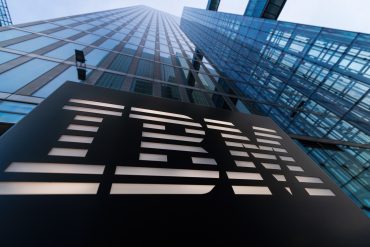
- Earnings Season
- Enterprise AI
- Hybrid Cloud
IBM’s Agentic Turn Signals New Phase in Enterprise AI Integration
7 minute read

IBM posts $16.3 billion in Q3 revenue as its $9.5 billion AI backlog, Groq partnership, and AgentOps governance tools redefine how enterprises deploy and scale artificial intelligence.
Key Takeaways
-
Q3 revenue reached $16.3 billion, up 9% year-over-year, beating forecasts as AI-driven software, hybrid infrastructure, and consulting accounted for most of the growth.
-
IBM’s AI backlog rose to $9.5 billion, now 15% of total revenue, reflecting accelerating adoption of watsonx, AgentOps, and Red Hat hybrid orchestration across regulated sectors.
-
Gross margins expanded to 57.3% and free cash flow climbed to $2.4 billion, while the new Groq partnershipand AgentOps governance framework position IBM as a compliance-native platform for large-scale AI deployment.
The Architecture of Conversion
When IBM reported third-quarter revenues of $16.3 billion in October 2025—a 9 percent year-over-year advance that exceeded analyst expectations—the achievement warranted attention not for its magnitude but for its composition. This was not cyclical uplift buoyed by hardware refreshes or consulting windfalls. Rather, it reflected the maturation of a thesis IBM has prosecuted with uncommon discipline: that artificial intelligence’s commercial promise resides not in experimentation but in orchestration, where models become workflows and workflows become business outcomes.
The $9.5 billion AI book of business IBM disclosed stands as the quarter’s signal metric. It represents accumulated client commitments across software, infrastructure, and consulting—a figure that has doubled since early 2024 and now accounts for roughly 15 percent of trailing revenues. For institutional observers parsing sector multiples in an environment where software trades at 25 times forward earnings, this concentration carries weight. It suggests IBM has moved beyond positioning to penetration, embedding its technology stack into enterprise operations where switching costs accumulate and annuities compound. As global AI spending trajectories point toward $200 billion by decade’s end, IBM’s early conversion rates—20 to 25 percent of bookings translating to deployed revenue within twelve months—indicate structural rather than speculative demand.

Governance as Infrastructure
What distinguishes IBM’s approach is architectural specificity. The October 7 unveiling of watsonx Orchestrate’s agentic capabilities, now generally available, introduced AgentOps: a framework for real-time observability and policy enforcement across multi-agent workflows. This addresses a documented friction point. Industry audits consistently show that 70 percent of enterprise AI initiatives stall during scaling, typically due to fragmented tooling, opaque model behavior, or compliance blind spots. By integrating drag-and-drop workflow design via Langflow with governance layers that audit decisions in real time, IBM has built what amounts to an operating system for production AI—one that accommodates models from Anthropic, Mistral, and IBM’s own Granite family without lock-in, while ensuring adherence to sector-specific mandates in finance, healthcare, and government.
This logic manifests across the financial results. Software revenues reached $7.2 billion, up 10 percent, with hybrid cloud platforms via Red Hat advancing 14 percent as enterprises reconcile cloud elasticity with on-premises governance. Automation surged 24 percent, a direct consequence of agentic adoption: clients deploying multi-step workflows where agents query databases, validate outputs, and escalate exceptions without human intervention. Data and analytics grew 8 percent, though transaction processing’s 1 percent decline signals cyclicality in mainframe refresh patterns—a reminder that even IBM’s pivot remains tethered to legacy rhythms.
The Inference Bottleneck Dissolved
Infrastructure delivered the quarter’s acceleration: $3.6 billion in revenues, up 17 percent, driven by hybrid infrastructure’s 28 percent climb and IBM Z’s 61 percent surge. The z16 mainframe, with AI acceleration and quantum-safe cryptography, aligns with escalating compute density requirements. Yet the October 20 announcement of IBM’s partnership with Groq reframes the narrative. Groq’s Language Processing Unit architecture, integrated with Red Hat’s vLLM stack, delivers inference speeds five times faster than conventional GPU configurations at materially lower cost and power consumption. For enterprises piloting agentic systems—healthcare organizations fielding thousands of patient queries, financial institutions executing real-time fraud detection—latency is not a performance variable but a viability threshold. The Groq integration dissolves that bottleneck, potentially unlocking $2 to $3 billion in incremental watsonx revenues by 2026 as pilots transition to production.
Strategically, this partnership insulates IBM against hyperscaler commoditization. While AWS, Azure, and Google dominate public cloud infrastructure, their inference stacks remain proprietary and power-intensive. IBM’s hybrid model, combining on-premises Z mainframes with Groq-accelerated inference and Red Hat orchestration, enables sovereign AI deployments—critical as the EU AI Act and analogous frameworks impose data residency and model transparency requirements. For CIOs navigating regulatory fragmentation, IBM offers a compliance-native path that hyperscalers, by architecture, cannot match without fundamental restructuring.
Consulting’s Annuity Conversion
Consulting, at $5.3 billion and up 3 percent, serves as the commercial bridge. Strategy and technology held flat, but intelligent operations grew 5 percent, reflecting demand for advisory services that operationalize agentic patterns. Project Bob, an AI-first integrated development environment announced October 7, automates code generation, testing, and security scanning using models from Anthropic, Mistral, and Granite.
Early benchmarks suggest 30 to 50 percent reductions in development cycle time for enterprise applications. This transforms consulting’s value proposition: rather than delivering one-off implementations, IBM now embeds recurring software subscriptions within advisory engagements, converting professional services into annuities. Against pure-play consultancies like Accenture, IBM’s proprietary stack yields higher attachment rates and utilization metrics—particularly relevant as talent scarcity constrains billable capacity across the industry.

The Margin Discipline
Profitability metrics underscore operational rigor. GAAP gross margins expanded 1.1 percentage points to 57.3 percent, with non-GAAP margins at 58.7 percent, driven by software’s mix accretion. Pre-tax margins reached 18.6 percent on a non-GAAP basis, up 2 percentage points, while net income from continuing operations yielded $2.65 per share—a 15 percent advance. Arvind Krishna’s assertion that clients are “leveraging our technology to deliver real business value with AI” is analytically sound only if the $9.5 billion backlog converts at scale. Current attach rates suggest momentum, but consulting’s subdued growth signals dependency on macroeconomic conditions for large transformations. Infrastructure’s hardware tilt, meanwhile, invites commoditization risk absent sustained software bundling.
Cash generation affirms balance sheet resilience. Third-quarter free cash flow of $2.4 billion, up $300 million, brings year-to-date totals to $7.2 billion, supporting raised full-year guidance of over 5 percent constant-currency revenue growth and $14 billion in free cash flow. With $14.9 billion in cash equivalents against $63.1 billion in debt—a debt-to-equity ratio below 4:1—IBM retains M&A flexibility while insulating against currency volatility. The balance sheet permits strategic acquisitions or partnerships, exemplified by the Anthropic collaboration, without compromising capital returns to shareholders.
The Regulatory Vacuum
For policymakers, IBM’s agentic architecture illuminates governance challenges that regulation has yet to address. Multi-agent systems, by design, obscure decision provenance: when three models collaborate to approve a loan or diagnose a condition, accountability fragments. AgentOps’ audit trails offer a technical solution, but regulatory frameworks lag meaningfully.
The EU AI Act mandates transparency, yet specifies no standard for multi-agent observability. As enterprises scale these systems, harmonized standards become imperative—not to stifle innovation, but to prevent regulatory fragmentation from creating compliance arbitrage that undermines institutional trust and cross-border deployment.
The Inflection’s Stakes
IBM’s third quarter marks an inflection less visible than seismic but no less consequential. The company has constructed the scaffolding for agentic enterprise: governed, hybrid, and interoperable. Whether this architecture becomes industry standard or remains IBM-specific depends on execution velocity, competitive response, and regulatory evolution. What is no longer speculative is demand. Enterprises are deploying agents at scale, and IBM has built the plumbing. The $9.5 billion backlog, Groq’s inference acceleration, and AgentOps‘ governance layer collectively represent not a product portfolio but an operating thesis: that AI’s value accrues not to those who build the most sophisticated models, but to those who make models safely operational.
In markets where infrastructure becomes intelligence, that distinction is the only moat that matters. IBM has spent the past three years excavating it. This quarter suggests the water is beginning to flow.







